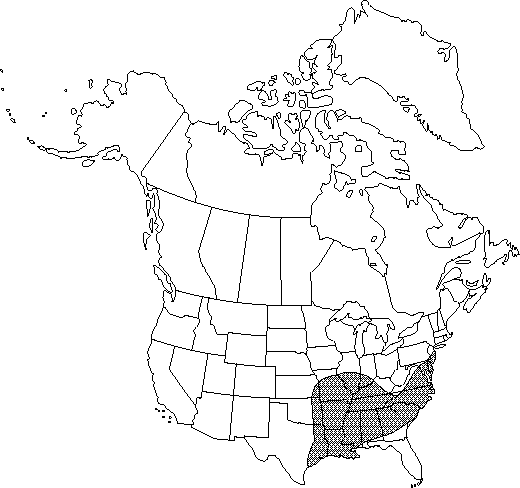Ranunculus laxicaulis
Man. Bot. 2: 4. 1841.
Stems erect or ascending, often rooting at proximal nodes, glabrous or sparsely pilose. Roots not thickened basally, glabrous. Proximal cauline leaf blades ovate to lanceolate or narrowly elliptic, 1.5-5.7 × 0.4-2.4 cm, base cordate to acute, margins finely denticulate or entire, apex broadly rounded to acuminate. Inflorescences: bracts linear to lanceolate or oblanceolate. Flowers: receptacle glabrous; sepals 4-5, spreading or reflexed from base, 2-3 × 1.5-3 mm, glabrous or pubescent; petals 4-6, 2-6 × 1-2 mm; nectary scales glabrous. Heads of achenes hemispheric to ovoid, 2-4 × 2-3 mm; achenes 0.8-1 × 0.8 mm, glabrous; beak deciduous, leaving stump 0.1-0.2 mm.
Phenology: Flowering late winter–summer (Mar–Jul).
Habitat: Around ponds and ditches, in meadows, roadsides, and open woods
Elevation: 0-100 m
Distribution

Ala., Ark., Del., Ga., Ill., Ind., Kans., Ky., La., Md., Miss., Mo., N.J., N.C., Okla., S.C., Tenn., Tex., Va.
Discussion
Selected References
None.